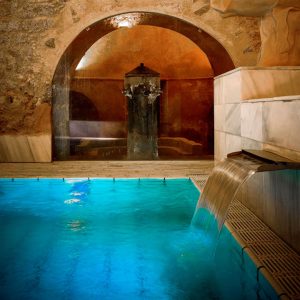Perez Comendador-Leroux Museum
Portada » Perez Comendador-Leroux Museum
In northern Cáceres, there is an impressive ashlar stone building in the Historic Complex of Hervás, between the old Franciscan infirmary – now the Town Hall – the Church of St. Mary and St. John, and the Jewish Quarter. This structure with a pediment on top, which dates back to the late 18th and early 19th centuries, is attributed to one of the architects who worked for the Chapter of Salamanca: Nicolás Rodríguez, García de Quiñones or Juan de Sagarbinaga. The building has housed the Pérez Comendador-Leroux Museum since 1986, featuring the sculptures and paintings of Enrique Pérez Comendador (Hervás 1900-Madrid, 1981) and Magdalena Leroux (Paris, 1902- Madrid 1985).
Both artists were trained in the classical tradition: in early 20th-century Seville, Comendador, alongside the Sevillian sculptor Joaquín Bilbao and the masters Gustavo Bacarisas, Virgilio Mattoti, and Montalbán, was associated with the School of Arts and the Museum of Fine Arts (both housed in the former Convent of La Merced). He was also connected to the Sevillian Athenaeum, which at the time enjoyed great prestige thanks to figures like José María Izquierdo
With scholarships from the Seville City Council and the Cáceres Provincial Council, he moved to Madrid in 1919 to continue his studies with Miguel Blay Fàbregas. During this time, he met José María de Winthuysen, Victorio Macho, and Enrique Barral, connecting with the Mediterranean and Catalan artistic traditions, from Aristide Maillol to Josep Clarà. In the following decade he undertakes several monumental works, travels abroad, participates in National Exhibitions, in the Venice Biennial, and the Ibero-American Exhibition of 1929. He meets Parisian painter Madeleine Leroux Casa Velázquez and they marry in Paris in 1931. He is awarded the First Medal at the National Fine Arts Exhibition in 1932. He receives a scholarship to Rome in 1934, becomes a Professor of Life Modelling at the Escuela Central de San Fernando (1941–1972), and is a member of Spanish and European academies: Seville, Madrid, Valencia, Barcelona, Lisbon, Paris, Florence. He created remarkable sculptures that can be found throughout Spain and his artistry was introduced to the Americas by the conquistadors. He capped off a distinguished career in Rome, directing the Spanish Academy from 1969 to 1973. Particularly noteworthy are his sculptures dedicated to women, the Roman nudes in Room V: The bold volumes, serene presence and fluid, enveloping forms make the “Campesina”, “Eva”, “Veneciana”, “La siesta” or “Mujer de Cántaro” pieces comparable to his Cristo de la Buena Muerte, San Pedro de Alcántara or Pizarro and place him among the great figurative sculptors of 20th century Spain.
The museum also features Magdalena Leroux’s watercolours, oils, and drawings, from early landscapes of the Atlantic Coast, French Riviera, Venice, and Paris to later works inspired by her deep knowledge of Spanish and Extremaduran geography and long periods of time spent in Italy, Egypt, and South America.
Madeleine Leroux trained in the French classical tradition, known for its precise and exquisite drawing. She was inspired to study Arts and Crafts by the World Expositions and the Fine Arts movement, and by her father, a professor of fine arts. Auguste Leroux was a renowned portraitist. His uncle, Georges Leroux, was a member of the Academy of Fine Arts. His siblings André and Luccienne were painters.
The museum opened to the public in 1986 and has been expanding its collections in recent years with the work of artists such as the Javier Winthuysen Losada (1876-1957), the Sevillian painter, scholar and garden designer, and especially the work of the Extremaduran Ángel Duarte Jiménez (1930-2007), now owned by the Helga de Alvear Museum. Duarte, an artist immersed in geometric abstraction and the European optical and kinetic art movements, worked from Paris and Sion (Switzerland), where he lived starting in 1961. He was a founding member of one of the most influential art groups of the second half of the 20th century: TEAM 57.
Finally, the museum has added a New Artists series to its collection, featuring works from the Eduardo Capa Sacristán Temporary Exhibition Hall since 1997, with pieces donated by the artists to the museum after exhibiting in the Hall. Pilar Molinos y Rafael Ortega (Fregenal de la Sierra), Luis Costillo (Huelva), Juan Gila (Zafra)), Jorge Gil (Jaca), Ángel Sardina (Ávila), Monserrat del Valle o J.M Velasco (Córdoba), José Manuel Pérez Tapias (Sevilla), Andrés Talavero ( Cáceres), Pedro Gamonal( Navalmoral de la Mata), José Maria Larrondo (Villafranca de los Barros), César David and Paloma Pájaro (Salamanca), Chema Navares (Perales de Navas), Ignacio Villar Salamanca) Juan José Fuentes (Córdoba), Arancha Goyeneche (Santander), Tirador (Gijón) Delia Sánchez Matas and María Jesús Florén ( Madrid), Bogdan Chaikovsky (Ukraine), Annia Alonso, Reinaldo López and J.M.Delgado (Cuba), and Matilde Granados (Belvís de Monroy),among many others.
An initiative launched in 1997 to promote the arts from the western Iberian Peninsula, highlighted by key exhibitions such as “4/18 in Villafranca and Hervás” (2009) and “Miscelánea”, organised by the Castrillón City Council at the Valey Cultural Centre in Piedras Blancas, Asturias.
César Velasco Morillo
Director
Perez Comendador-Leroux Museum
Asensio Neila, 5. 10700, HERVÁS
Visit more posts of the Blog
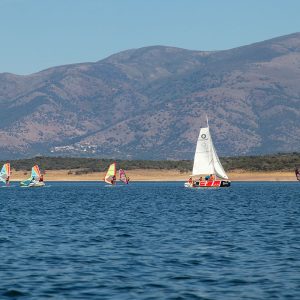
How to Navigate the Reservoirs of Cáceres
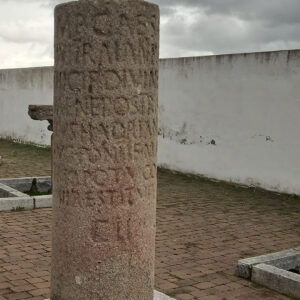
The Vía de la Plata Roman Road through the Caparra Mountains
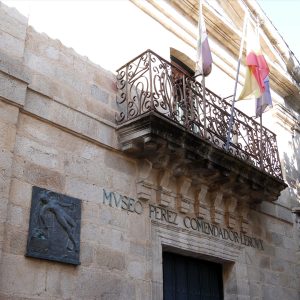
Perez Comendador-Leroux Museum
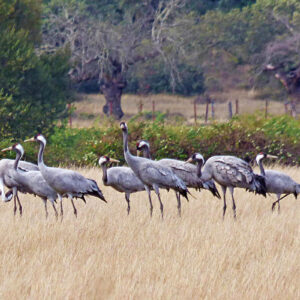
Diverse Birdlife in Ambroz-Cáparra

The Vía de la Plata Roman Road through Ambroz-Cáparra
